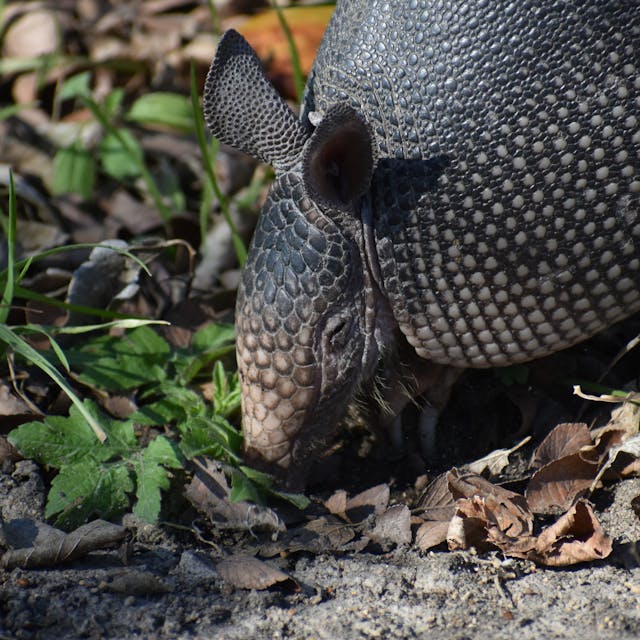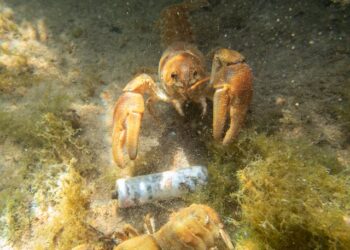Wondering what armadillo poop looks like? This in-depth guide breaks down its appearance, patterns, and practical implications.
If you’ve stumbled upon some mysterious droppings in your backyard or garden, you’re not alone. Animal scat can often be the most telling clue of who’s been sneaking around when no one’s watching. And when it comes to armadillos, these little armored diggers tend to leave behind more than just overturned soil.
Understanding what armadillo poop looks like isn’t just for curious hikers or backyard naturalists. It can help homeowners detect pest problems early, protect gardens, and even monitor for potential health risks. And let’s be honest, there’s a weird satisfaction in learning how to identify wild poop with confidence. Kind of like nature’s detective badge.
What You'll Discover:
What Does Armadillo Poop Look Like?
Let’s cut straight to it.
Armadillo poop generally appears as small, oval or slightly cylindrical pellets that measure around 1 to 1.5 inches long and about half an inch in diameter. The droppings are often brown or dark brown in color, depending on what the armadillo has been munching on.
They may look slightly tapered on one or both ends, not unlike cat poop but more compact and uniform in shape. In dry conditions, they harden quickly and can resemble cracked, dried clay. In moist environments, they hold their structure a bit longer and can feel sticky or crumbly if fresh.
Location Matters: Where Armadillos Usually Poop
Armadillos are not particularly picky about where they do their business. Unlike raccoons, which tend to return to the same latrine spots, armadillos are more opportunistic.
They’ll defecate:
- Near their burrow entrances
- Along foraging trails
- Around garden beds where they dig for insects
- In shaded, moist areas
If you’ve noticed poop consistently showing up around dug-up soil, you’re likely dealing with an armadillo. This is especially true if your lawn looks like a battlefield of shallow holes.
Fresh vs. Old Armadillo Poop: How to Tell the Difference
Being able to distinguish between fresh and old droppings helps gauge how recently the armadillo has visited.
Fresh Armadillo Droppings:
- Darker in color
- Slightly shiny or moist appearance
- Pungent, earthy smell (not overpowering, but noticeable)
- Softer texture; may crumble when poked with a stick
Aged Armadillo Droppings:
- Lighter in color, often pale brown or gray
- Dried, cracked surface
- Odorless
- Rock-hard consistency
If you’re monitoring your yard or trail for repeat visitors, tracking the state of the scat can help you narrow down the timing of their visits, like a detective piecing together the scene of a crime.
What Armadillo Poop Tells You About Their Diet
One of the most fascinating aspects of identifying armadillo poop is what it reveals about their diet. Armadillos are insectivores, meaning they feed primarily on bugs, grubs, beetles, ants, termites, and even worms.
Depending on what they’ve consumed, their feces may show:
- Tiny exoskeleton fragments from beetles or ants
- Gritty texture from soil swallowed during digging
- Occasional traces of fruit or fungi (rare but possible)
If you’re into examining poop (and let’s be honest, we’re here, so you probably are), a close inspection with gloves or a stick might even reveal shiny chitin pieces or undigested shell bits. These aren’t just gross curiosities, they’re little windows into the armadillo’s foraging habits.
Armadillo Poop vs. Other Animal Droppings
If you’re not 100% sure you’re dealing with an armadillo, it’s useful to compare their scat with that of other common backyard visitors.
Armadillo vs. Raccoon:
- Raccoon poop tends to be tubular, segmented, and may contain berry seeds or fur.
- Armadillo poop is more uniform, pellet-like, and rarely contains visible fruit matter.
Armadillo vs. Possum:
- Possum droppings are more sausage-shaped and tend to have a twisted appearance.
- Armadillo droppings remain shorter, more consistent in shape, and smoother.
Armadillo vs. Skunk:
- Skunk poop often contains insect remains too, but is typically looser and more variable in shape.
- Armadillo scat is denser, often reflecting a diet of soil-dwelling bugs.
When in doubt, the presence of digging activity, shallow cone-shaped holes in your yard, is a key indicator that you’re dealing with armadillos.
Is Armadillo Poop Dangerous?
This is where things get serious. While armadillos themselves are generally shy and non-aggressive, their poop can be a vector for harmful bacteria and parasites.
Health Concerns Linked to Armadillo Feces:
- Salmonella: As with many wild animal droppings, handling or accidentally ingesting contaminated material can lead to food poisoning symptoms.
- Leprosy (Hansen’s Disease): Yes, armadillos can carry the bacterium that causes leprosy. While it’s extremely rare to contract it from their feces, the fact that they’re carriers is worth noting, especially in the southern United States.
- Parasites: Their feces may contain roundworm eggs or other intestinal parasites.
Always wear gloves if you need to inspect, clean, or remove animal feces, and wash your hands thoroughly afterward.
How to Safely Remove Armadillo Droppings
If armadillos have turned your backyard into their personal powder room, here’s how to handle the situation safely:
- Wear disposable gloves and a mask , no shortcuts here.
- Use a scooper or shovel to collect droppings.
- Place them in a sealed plastic bag and dispose of in outdoor garbage.
- Disinfect the area with a diluted bleach solution (1 part bleach to 9 parts water).
- Wash your hands thoroughly even if you wore gloves.
If the droppings are near your vegetable garden or compost area, consider fencing off the perimeter with a low barrier to discourage future visits.
Why Armadillos Might Be Choosing Your Yard
Let’s be blunt: if armadillos are pooping in your yard, they’re not doing it by accident.
They’re likely living nearby or viewing your property as a reliable buffet. Here’s what attracts them:
- Abundance of soil-dwelling insects
- Moist soil that’s easy to dig
- Leaf litter or mulch where bugs thrive
- Lack of predators or deterrents
The poop is just a symptom. The real issue is your yard’s accidental hospitality.
Preventing Future Visits (and Droppings)
If you’re done hosting uninvited diggers, here’s how to cut off the invitation:
- Clear out grubs and bugs with nematodes or natural pest control
- Keep soil dry where possible; armadillos prefer moist digging
- Install motion-sensor lights, they’re nocturnal and hate surprises
- Use natural repellents, like predator urine (available at garden stores)
- Install low fencing, 12–18 inches deep underground to prevent burrowing
Removing poop is fine. Preventing the pooper is better.
When to Call a Professional
If the problem persists and poop keeps showing up despite your efforts, you might be dealing with a burrowed-in resident. Armadillo removal is legal in many U.S. states (check your local regulations), but handling it on your own is rarely a clean job.
A wildlife control expert can:
- Identify active burrows
- Set humane traps
- Relocate the armadillo legally
- Offer long-term exclusion plans
Don’t wait until your yard looks like a minefield. If you’re seeing regular poop piles and tunnel networks, it’s time to bring in backup.
Key Takings
- Armadillo poop is typically oval, pellet-like, and brown, often found near dug-up soil.
- It can reveal diet clues, like insect shells or soil content.
- Fresh droppings are moist and dark; old ones are dry, cracked, and lighter.
- It’s important to distinguish from raccoon, possum, or skunk poop to know what animal you’re dealing with.
- Armadillo feces may carry bacteria or parasites, handle with gloves and clean thoroughly.
- Their poop usually signals a deeper issue: your yard is bug-rich and burrow-friendly.
- Prevention includes soil maintenance, repellents, and fencing.
- Persistent poop? A professional trapper might be your best bet.





